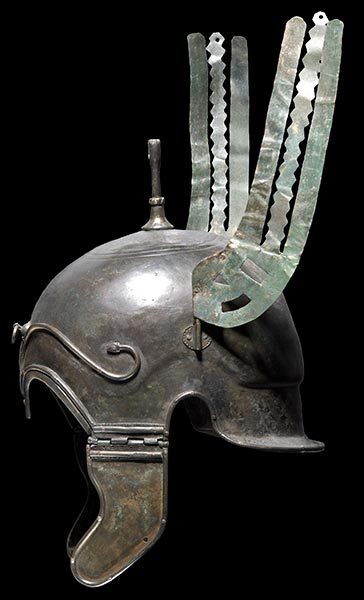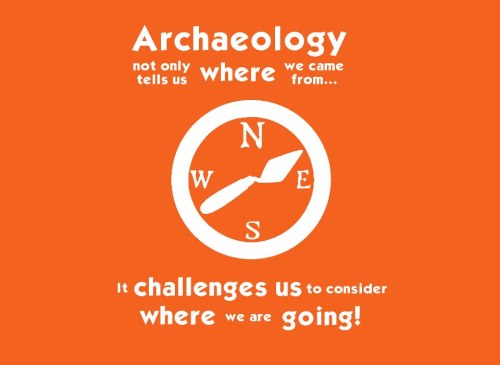#archeology
Does anyone know where the long tumblr post of “We need to have museums with remakes of artifacts if the culture is still living/present in society?
10th Millennium B.C.E. Daggers
Photo #1
- Period: Iron Age II
- Dated: circa 10th–9th century B.C.E.
- Geography: Iran, probably from Luristan
- Medium: Bronze
- Measurements: 4.06 in. (10.31 cm)
Photo #2
- Period: Iron Age II
- Dated: circa 10th–9th century B.C.E.
- Geography: Northwestern Iran, Caspian region
- Medium: Bronze
- Measurements: 2.36 x 17.99 in. (5.99 x 45.69 cm)
Photo #3
- Period: Iron Age II
- Dated: circa 10th–9th century B.C.E.
- Geography: Western Iran
- Medium: Bronze
- Measurements: 13.94 in. (35.41 cm)
Photo #4
- Period: Iron Age II
- Dated: circa 10th–9th century B.C.E
- Geography: Northwestern Iran, Caspian region
- Medium: Bronze
- Measurements: 1.69 x 1.1 in. (4.29 x 2.79 cm)
Photo #5
- Period: Iron Age I/II
- Dated: circa 10th–9th century B.C.E.
- Geography: Northwestern Iran, Caspian region
- Medium: Bronze
- Measurements: 2.36 x 15.51 in. (5.99 x 39.4 cm)
Photo #6
- Period: Iron Age II
- Dated: circa 10th–8th century B.C.E.
- Geography: Northwestern Iran, Caspian region
- Medium: Bronze
- Measurements: 20.75 in. (52.71 cm)
B.C.E. stands for Before Common Era.
Post link

A mysterious leaden sarcophagus discovered in the bowels of Paris’ Notre-Dame cathedral after it was devastated by a fire will soon be opened and its secrets revealed, French archaeologists said Thursday.
The announcement came just a day before the third anniversary of the inferno that engulfed the 12th century Gothic landmark, which shocked the world and led to a massive reconstruction project.
During preparatory work to rebuild the church’s ancient spire last month, workers found the well-preserved sarcophagus buried 20 metres (65 feet) underground, lying among the brick pipes of a 19th century heating system.
But it is believed to be much older—possibly from the 14th century. Read more.

Researchers David Stuart from the University of Texas at Austin, Heather Hurst and Boris Beltrán from Skidmore College and independent scholar William Saturno report the earliest evidence of a Maya sacred calendar in Guatemala. In their paper published in the journal Science Advances, the group describes their work, which involved sifting through painted mural fragments at the Las Pinturas pyramid complex in Guatemala, and how they found the calendar.
The Las Pinturas pyramid complex is located near San Bartolo and has been the site of excavation for a number of years. Prior research has shown construction at the site began 2,300 to 2,200 years ago and that the pyramids at the site were built in multiple phases. As each phase of the project was completed, parts of the old structure were knocked down. As the pyramids grew in size, the pieces of the knocked-down structures remained hidden inside, providing a timeline of sorts of the construction of the complex. Read more.

Circular mounds of rocks dot the desert landscape at the archaeological site of Tombos in northern Sudan. They reveal tumuli—the underground burial tombs used at least as far back as 2500 B.C. by ancient inhabitants who called this region Kush or Nubia. As a bioarchaeologist who excavates and analyzes human skeletal remains along with their related grave goods, I’ve been working at Tombos for more than 20 years.
Discussions about ancient history in Africa are dominated by the rise of Egypt. But there were several societies that rose to great power in the Nile River Valley since the middle of the third millennium B.C., including this often overshadowed neighbor to Egypt’s south. Even though ancient Kush rivaled and, at times, conquered Egypt, there’s been a relative lack of modern attention paid to this civilization. Read more.

A rare 1,200-year-old silver coin featuring Charlemagne — one of the only known portraits made of the emperor during his lifetime — was recently rediscovered and promptly taken on a wild journey from a farm in France, to the bidding grounds of eBay and, finally, to a museum in Germany.
The coin’s modern travels began when a man in France wanted to build a house but was short on cash. He remembered that he had inherited a coin collection from his grandfather, a farmer in the Paris region. After going through his grandfather’s collection, the man discovered the Charlemagne coin, known as a denarius, and he put it up for auction on eBay.
“We have here some experts that regularly check what is on eBay concerning archaeology,” said Frank Pohle, director of the Route Charlemagne, a group of municipal museums in Aachen, Germany, that focus on cultural history. Read more.

The United States on Thursday returned a cache of smuggled ancient artifacts to Libya as the oil-rich Mediterranean country struggles to protect its heritage against the backdrop of years of war, turmoil and unrest.
The repatriated items include two sculptures dating to the 4th century B.C. from the ancient city of Cyrene.
One, named the “Veiled Head of a Female,” was previously in the hands of a private collector of other illegal artifacts, according to a statement from the U.S. Embassy in Libya. The other, also a Hellenic bust, had been at the Metropolitan Museum of New York since 1998, the statement said. Both were displayed by Libyan antiquities officials at a reception ceremony in the country’s capital, Tripoli. Read more.

Archaeologists have discovered a large burial mound in the Siberian “Valley of the Kings” dating to more than 2,500 years ago. The ancient tomb holds the remains of five people, including those of a woman and toddler who were buried with an array of grave goods, such as a crescent moon-shaped pendant, bronze mirror and gold earrings.
The mounds were made by the Scythians — a term used to describe culturally-related nomadic groups that lived on the steppes between the Black Sea and China from about 800 B.C. to about A.D. 300.
The burial mound, known as a kurgan, is located near a previously excavated kurgan belonging to a Scythian chief. Given the proximity of the woman’s burial mound to the chief’s — only 65 feet (20 meters) away — and the valuable artifacts buried with her, “I think that she was a person of great importance in the society of nomads,”…Read more.

Archaeologists in Egypt have discovered five well-preserved and colorfully decorated tombs, dating to around 4,200 years ago, that were dug beside a pyramid at Saqqara, the Egyptian Ministry of Tourism and Antiquities announced in a statement.
The tombs have hieroglyphic inscriptions that provide information on the people who were interred there, as well as wall paintings that depict a variety of images, including people, jars, food, colorful geometric patterns and what looks like a winged insect.
The tombs date to the sixth dynasty (circa 2323 to 2150 B.C.) or to the period following it, known as the First Intermediate Period (2150-2030 B.C.). Read more.
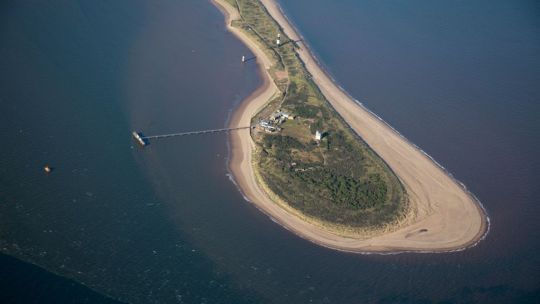
Archaeologists are closer than ever to locating a lost medieval town sometimes referred to as Yorkshire’s “Atlantis,” beneath the waves.
Also called Ravenser Odd, the town flourished in what is now east Yorkshire along the east coast of England during the Middle Ages before it was lost to the sea.
“It was a major settlement of some 400+ households,” Daniel Parsons, a professor of sedimentology at the University of Hull in Yorkshire, told Live Science in an email. Historical records say that the site had a sea wall, harbor, prison and marketplace, Parsons said.
A search for Ravenser Odd in November 2021 in part of the Humber River estuary turned up empty; but now the team believes that it is getting closer than ever now that they have narrowed down the remaining area where it could be located. Read more.

NOAA and partners today announced the discovery of the wreck of a 207-year-old whaling ship, called Industry, found on the bottom of the Gulf of Mexico. The remains of the 64-foot long, two-masted wooden brig opens a window into a little known chapter of American history when descendants of African enslaved people and Native Americans served as essential crew in one of the nation’s oldest industries.
“Black and Native American history is American history, and this critical discovery serves as an important reminder of the vast contributions Black and Native Americans have made to our country,” said U.S. Deputy Secretary of Commerce Don Graves. “This 19th century whaling ship will help us learn about the lives of the Black and Native American mariners and their communities, as well as the immense challenges they faced on land and at sea.” Read more.

An international team with participation of the University of Bern provides new insights about how the inhabitants of the “oldest city in the world” in Çatalhöyük (Turkey) buried their dead. Their bones were partially painted, excavated several times and reburied. The findings provide insight into the burial rituals of a fascinating society that lived 9,000 years ago.
Çatalhöyük (Central Anatolia, Turkey) is one of the most important archeological sites in the Near East, with an occupation that dates back to 9,000 years ago. This Neolithic settlement, known as the world’s oldest city, covers an area of 13 ha and features densely aggregated mudbrick buildings. The houses of Çatalhöyük present the archeological traces of ritual activities including intramural burials with some skeletons bearing traces of colorants, and wall paintings. Read more.

A trio of researchers from Universidad de Cantabria and the University of Cambridge has found evidence suggesting that up to a quarter of all ancient handprints found on cave walls in Spain were made using children’s hands. In their paper published in the Journal of Archaeological Science, Verónica Fernández-Navarro, Edgard Camarós and Diego Garate describe their study of ancient hand prints found in five Spanish caves and what they believe their findings suggest about ancient hand prints on cave walls in general.
Over the past several decades, hand prints on cave walls have come to represent ancient cave art as much as drawings of animals. Scientists studying the handprints have generally agreed that they, along with the animal drawings, were all likely done by males in a given group. In this new effort, the researchers have found evidence suggesting that up to a quarter of all cave hand prints were made using children’s hands. Read more.
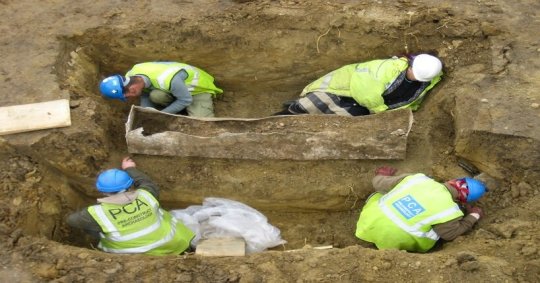
An abandoned mausoleum and silver extraction taking place on an industrial scale at a Roman site in rural Kent have left archaeologists with a 1500-year-old mystery.
Archaeologists working on an excavation at Grange Farm, near Gillingham, discovered 15 kilograms of litharge—a material associated with the extraction of silver from other metals. This is the largest amount ever found on a British Roman site and greatly exceeds the amount that archaeologists would normally expect to find on a rural settlement such as that at Grange Farm, suggesting that the refining of silver was taking place on an industrial scale. Read more.

Roughly 60 years ago, an archaeologist snapped photos of several skeletons buried in 8,000-year-old graves in southern Portugal. Now, a new analysis of these previously undeveloped photos suggests that the oldest human mummies don’t hail from Egypt or even Chile, but rather Europe.
More than a dozen ancient bodies were found in Portugal’s southern Sado Valley during excavations in the 1960s, and at least one of those bodies had been mummified, possibly to make it easier to transport before its burial, researchers said after analyzing the images and visiting the burial grounds.
And there are signs that other bodies buried at the site may have also been mummified, which suggests that the practice could have been widespread in this region at this time. Read more.

A new ultra-powerful scan of the Great Pyramid of Giza using cosmic rays could reveal the identities of two mysterious voids inside.
The largest of the two voids is located just above the grand gallery — a passageway that leads to what may be the chamber of the pharaoh Khufu — and is about 98 feet (30 meters) long and 20 feet (6 m) in height, according to previous pyramid scans. Archaeologists are uncertain as to what they will find in the void, which could be one large area or several small rooms, they said. They also hope to find out the function of that void; the most fantastic possibility is that the opening is the hidden burial chamber of Khufu. A more mundane possibility is that the cavity played some role in the building of the pyramid.
The previous scans also revealed a second, much smaller void, just beyond the north face of the pyramid. Its purpose is also unclear. Read more.
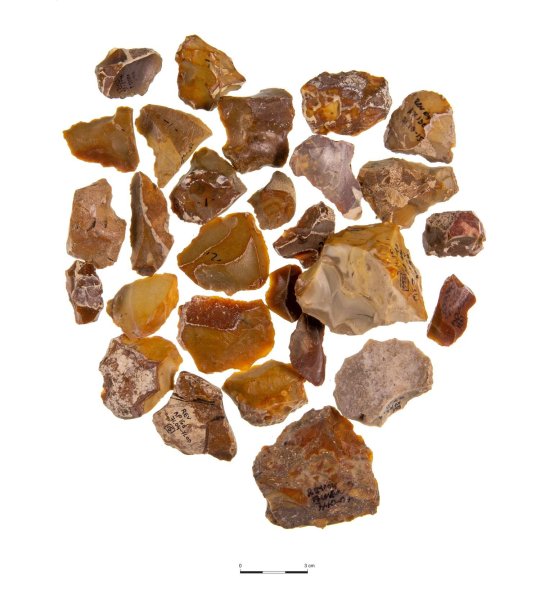
A first-of-its-kind study at Tel Aviv University asks what drove prehistoric humans to collect and recycle flint tools that had been made, used, and discarded by their predecessors. After examining flint tools from one layer at the 500,000-year-old prehistoric site of Revadim in the south of Israel’s Coastal Plain, the researchers propose a novel explanation: prehistoric humans, just like us, were collectors by nature and culture. The study suggests that they had an emotional urge to collect old human-made artifacts, mostly as a means for preserving the memory of their ancestors and maintaining their connectedness with place and time.
The paper appeared in the prestigious scientific journal Scientific Reports, published by Nature. Read more.

